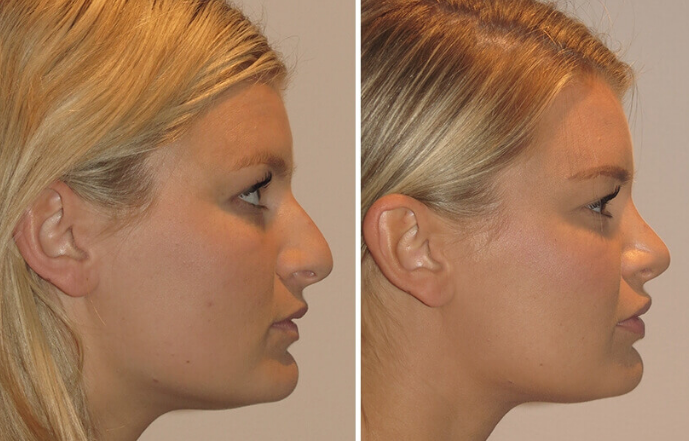Nose Implant in Metro Manila
Find the best clinics for Nose Implant in Metro Manila
With Medijump you can browse 1 facilities offering Nose Implant procedures in Metro Manila. The cheapest price available is $1,439 in Metro Manila. And for the cheapest price globally, prices start from $192 in Thailand.
Nose Implant in Philippines
Price: $ 1,439
Nose Implant in Metro Manila
Price: $ 1,439
Thailand offers the best prices Worldwide
Price: $ 192
From 2 verified reviews
Eddy Pedro, 11 September 2020
Very nice and our number one actress Julia montes I greet u
WHY US?
At Medijump, we're making medical easy. You can search, compare, discuss, and book your medical all in one place. We open the door to the best medical providers worldwide, saving you time and energy along the way, and it's all for FREE, no hidden fees, and no price markups guaranteed. So what are you waiting for?

Free

Best Price

Widest Selection

Risk-Free
What you need to know about Nose Implant in Metro Manila

Nose implant, also known as Augmentation Rhinoplasty, is a cosmetic surgery to change the shape of the nose by placing an implant. The procedure is mostly performed to bring balance to the face since the nose is the most noticeable part of the face. The procedure can be carried out to enhance appearance or repair deformities from an injury or correct a birth defect.
What does a Nose Implant Procedure Involve?
Nose implant can be carried out under general anesthetic or local anesthetic with sedation, depending on the complexity of the surgery and your surgeon's preference. The procedure may be performed through a small incision inside the nostrils (closed rhinoplasty) or through a small external incision at the base of your nose (open rhinoplasty). After making the incision, your doctor will place the implant, which may be synthetic (Gore-Tex, Silicone, Medpor) or autologous (from other parts of your body, such as cartilage from your rib). The final step is placing the nose’s skin and tissue into its original position and stitching up the incisions.
How Long Should I Stay in Metro Manila for a Nose Implant Procedure?
If no complications arise, you should be able to leave the hospital on the same day. However, if general anesthesia is used during the surgery, you may need to stay overnight. After you are discharged from the hospital, expect to stay in Metro Manila for 10 to 14 days to attend regular follow-up checkups.
What's the Recovery Time for Nose Implant Procedures in Metro Manila?
You may experience swelling around your eyes, but this will gradually subside within 3 to 14 days. You should avoid strenuous activity (such as heavy lifting and intense exercise) for 3 to 6 weeks, but you may be able to return to work and some light activities in 1 to 2 weeks following the surgery. The full recovery time until your nose is completely healed is normally 6 months.
What sort of Aftercare is Required for Nose Implant Procedures in Metro Manila?
After your surgery, you will need to keep your head elevated to prevent aggravated swelling. Do not blow your nose and avoid extreme facial expressions for at least 10 to 14 days following the surgery. Your doctor will give you a recommended diet plan, which may include high-fiber foods such as vegetables and fruits to avoid constipation since constipation can cause strain to the surgery site.
What's the Success Rate of Nose Implant Procedures in Metro Manila?
Nose implant is known to have a high success rate of about 85% to 90%, particularly when performed by a certified plastic surgeon. Although the success rate is high, you need to be aware of the side effects and risks, such as bleeding, infection, difficulty breathing, permanent numbness around the nose, uneven-looking nose, pain, scarring, discoloration, septal perforation, and allergic reactions to the anesthesia.
Are there Alternatives to Nose Implant Procedures in Metro Manila?
If you do not want to undergo surgery but you want to change the appearance of your nose, your alternatives are fillers and Botox, which are non-invasive. Both are injected into the skin of your nose to change its shape.
What Should You Expect Before and After the Procedure
Before the nose implant, you may not like the shape, size, or the overall look of your nose, your nose may look smaller or large on your face. After a nose implant, the size of your nose can be augmented and made proportionately to fit your face, which will improve your overall appearance.
Whilst the information presented here has been accurately sourced and verified by a medical professional for its accuracy, it is still advised to consult with your doctor before pursuing a medical treatment at one of the listed medical providers
No Time?
Tell us what you're looking for and we'll reachout to the top clinics all at once
Enquire Now

Popular Procedures in Metro Manila
Prices Start From $404

Prices Start From $111

Prices Start From $70

Prices Start From $220

Prices Start From $1,945

Prices Start From $101

Prices Start From $101

Prices Start From $500

Recommended Medical Centers in Metro Manila for Nose Implant

- Interpreter services
- Translation service
- Religious facilities
- Medical records transfer
- Medical travel insurance
- Health insurance coordination
- TV in the room
- Safe in the room
- Phone in the room
- Private rooms for patients available

- Interpreter services
- Translation service
- Religious facilities
- Medical records transfer
- Medical travel insurance
- Health insurance coordination
- TV in the room
- Safe in the room
- Phone in the room
- Private rooms for patients available

- Interpreter services
- Translation service
- Religious facilities
- Medical records transfer
- Medical travel insurance
- Health insurance coordination
- TV in the room
- Safe in the room
- Phone in the room
- Private rooms for patients available

- Interpreter services
- Translation service
- Religious facilities
- Medical records transfer
- Medical travel insurance
- Health insurance coordination
- TV in the room
- Safe in the room
- Phone in the room
- Private rooms for patients available

- Interpreter services
- Translation service
- Religious facilities
- Medical records transfer
- Medical travel insurance
- Health insurance coordination
- TV in the room
- Safe in the room
- Phone in the room
- Private rooms for patients available

- Interpreter services
- Translation service
- Religious facilities
- Medical records transfer
- Medical travel insurance
- Health insurance coordination
- TV in the room
- Safe in the room
- Phone in the room
- Private rooms for patients available

- Interpreter services
- Translation service
- Religious facilities
- Medical records transfer
- Medical travel insurance
- Health insurance coordination
- TV in the room
- Safe in the room
- Phone in the room
- Private rooms for patients available

- Interpreter services
- Translation service
- Religious facilities
- Medical records transfer
- Medical travel insurance
- Health insurance coordination
- TV in the room
- Safe in the room
- Phone in the room
- Private rooms for patients available

- Interpreter services
- Translation service
- Religious facilities
- Medical records transfer
- Medical travel insurance
- Health insurance coordination
- TV in the room
- Safe in the room
- Phone in the room
- Private rooms for patients available

- Interpreter services
- Translation service
- Religious facilities
- Medical records transfer
- Medical travel insurance
- Health insurance coordination
- TV in the room
- Safe in the room
- Phone in the room
- Private rooms for patients available

